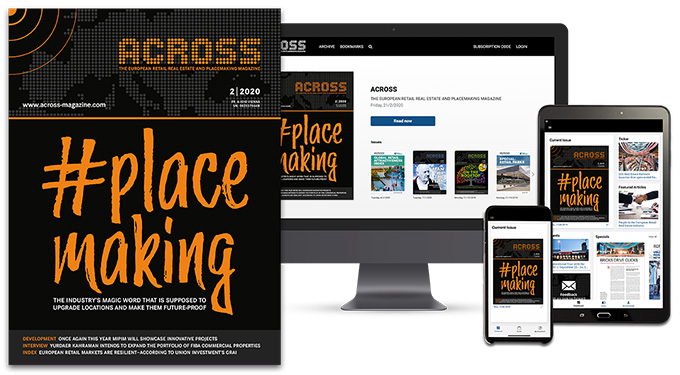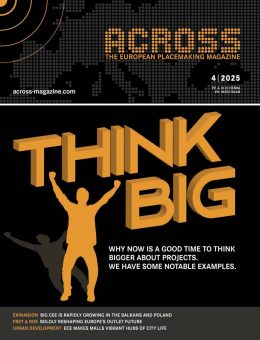As retail continues to evolve, the onus is placed on creating destinations that provide experience rather than utility. The more attention that is paid to how that experience is curated, the more important the conversation around data becomes – whether it involves footfall, sales collection, or sustainability metrics, for example.
As data begins to redefine the retail experience, a key question that we must ask ourselves is: “Why should we share data?” That question can be applied as much to our personal lives, as consumers, as it can to business. As data acquisition becomes easier, the “why” must be understood to ensure that data sharing is both safe and that some benefit is gained from the activity. The idea of collecting data for data’s sake continues to be an issue, as we are increasingly seeing data collected with no discernible way to gain any insight from it. That leaves those who have shared data in the dark as to how it is being used, with uncertainty raising questions around outcome and efficacy.
To many the idea of sharing data is clouded with questions around how it will be used, and what the implications will be. However, as businesses shape and implement their data strategies, there is a real opportunity to use data for good – to enhance experiences and empower communities to be successful. The challenge remains for commercial real estate owners, retailers, and consumers to be reassured that data is being used for good, thereby building trust in a community.
We have already seen guardrails begin to be put in place around data, through the introduction of the enhanced GDPR in 2018, which ensures that it is acquired, managed, and used for the right purposes. In principle, if data is used for genuine reasons, with the right governance, and the “why” is defined, it can be significantly beneficial to both the acquirer and the end-user.
Commercial real estate has transformed a lot over the years. Perhaps most significantly, landlords have shifted to viewing their tenants as customers, building partnerships rather than maintaining more transactional relationships with companies leasing space. Creating strong partnerships ensures an environment of collaboration, where the success of one benefits the other. This shift has led to the creation of retail destinations, where the entire community of landlords, property managers, and retailers all come together to ensure that a destination is successful, as the success of the whole benefits the individual.
The collection and sharing of data requires trust and transparency from both operators and retailers. Historically, this has been a challenge due to poor tenant-landlord relationships, high-profile data breaches, and cases of misuse. Putting the “why” at the center of this relationship ensures that all parties are involved in what they are trying to achieve and can work together to reach a common goal. It is not uncommon to hear that a retailer is reticent to share data, asking: “Why should I give my data away? How does it benefit me?” If you’ve already established the “why” and created transparency around it, with shared outcomes, then that barrier is removed. Working in silos is counterproductive and cannot benefit any commercial destination, creating differing goals between landlords and tenants. This is especially true when you think of the value of data in terms of the cost of acquisition versus the derived value attained through insights. If goals are shared, then costs are shared; then, shared data becomes richer, and insights become mutually beneficial. Rich data can inform leasing, marketing, customer service, and operational strategies for landlords, while providing tenants with data to help improve operational performance, product inventories, resourcing, and to highlight trading opportunities.
In today’s modern real estate environment, the role of landlords should be to support tenants and ensure that they proactively thrive at a destination – and they should provide them with the tools to do so. Ensuring service charge budgets are spent in areas that will make the biggest impact on tenants is much easier when the impact of initiatives can be evaluated through data and insights. Using data has become essential when it comes to informing decisions, minimizing risks, and maximizing ROI. Furthermore, data has become increasingly important in reaching sustainability targets, helping to inform joint initiatives and to ensure everyone is reaching their goals. With both consumers and investors continuing to put a premium on sustainability, this is a shared benefit made possible through data.
Data for enhanced performance
As commercial real estate evolves and prime location increases in importance, data provides tenants and landlords with the opportunity to maximize ROI. Operating a physical retail unit or managing a destination has become more challenging as margins are continually squeezed by increasing labor and supply costs, along with energy and property costs. Against that backdrop, landlords will, undoubtedly, continue to explore new services, products, and facilities to attract consumers. That, in turn, requires accurate and timely data to understand demographics, sales metrics, footfall, market size, and ROI to generate de-risked decision-making strategies and to pilot concepts. Accordingly, tenants are eager to gain insights that can enable them to pinpoint more strategic locations; it isn’t always about having the most stores, or the biggest stores, but having the stores that perform the best. The industry has come a long way from simply making sure void rates are minimized and the lights are on. Assets and destinations portfoliowide are being looked at through a more holistic lens. Data is impacting decisions ranging from leasing to understanding the efficiency of entire buildings for regear or redevelopment, creating smarter more efficient spaces. By understanding the “why”, landlords and tenants can engage on the same level, and data sharing becomes a must, rather than a topic of conversation peppered with who owns what and: “Why should I give up my data to serve you?”. It becomes a mutually beneficial undertaking that cements relationships focused on success.
Consumer data for community growth
The acquisition of data and how it is shared has most commonly been seen in the capture, analysis, and application of consumer data. We often hear the term “Big Brother” used concerning consumer data; it evokes a sense of intrusion and control. However, that is only the case when neither party has been brought into the “why”. As a consumer, when you understand that the use of your data can be beneficial to creating a better consumer experience, it becomes easier to opt into that symbiotic relationship.
For landlords and tenants, consumer data is highly anonymized, deriving value by understanding how we (the consumer) interact with products, services, buildings, and locations. Through innovation, this ability to quickly analyze large amounts of data not only allows for the reduction of costs and the increase of revenue, but, more importantly, it results in better experiences for the consumer, creating landscapes that people want to be in and interact with.
Trust and transparency are key here: Consumers need to understand how their data is going to be acquired, how it is going to be used, and to what benefit. Creating shared goals and interests ensures that the lens of privacy violation is removed as an undertone to the conversation. As consumers become increasingly time-poor, more informed, and more selective, higher expectations arise. These expectations put more pressure on landlords and tenants to not just meet, but to exceed their expectations. The only way to understand these expectations is through data sharing.
Retailers are also seeing ever-increasing costs; therefore, anything that can be done to ensure that the right product is in the right place at the right time, that resourcing is efficient, and that a successful retail experience is delivered for the right target market decreases the costs that have to be passed on to the consumer.
Data comes in many guises. Data acquisition is not just about obtaining marketable email addresses; instead, perhaps more importantly, it is about understanding the needs of the consumer. That enables brand trust and loyalty to be built by delivering value to the consumer. Understanding consumer spending habits, movement, visitor analytics, demographics, and preferences not only ensures better operations through understanding security and staffing levels, but impacts many other areas, such as transport initiatives, customer services, community outreach programs, and facilities, to deliver the best possible experiences. Consumers often think that their data matters on an individual level, but that is not the case. The habits and movements of one individual are not important; it is the sharing of many people’s data that enables a full picture to be painted of what people want and need.
Having mass information then enables benefits to be passed on to the individual by delivering a better retailer mix, thereby creating a halo effect for everyone at a given destination. It also allows for the creation of loyalty programs and rewards tailored to the individual, providing the consumer with incentives that increase visitation and spending, while allowing the consumer to access the rewards he or she demands.
Act without ego
Whether it is B2B or B2C data, both businesses and consumers alike must act without ego. Data sharing is incredibly powerful. We’ve seen the benefits in our business with the launch of our new data platform, which helps our customers deliver better experiences to their tenants, and, in turn, to consumers, thereby driving increased performance.
Removing personal motivations and looking at the whole, and uniting through joint goals and purpose, will ultimately benefit the individual business or person. Taking a connected community approach creates destinations and experiences that work for everyone. That creates better spaces in which to be, more efficiently run assets, access to better products, services, and facilities, and it builds brand trust.

Mark Bruce
Mark Bruce is the Data & Insights Director at Kinexio. Bruce joined Kinexio last September with over 20 years of operational experience in retail. He joins from British Land, where during his 12 year tenure, he implemented new methods of data acquisition and footfall analytics at Meadowhall, before expanding the data and insight programme across the British Land retail portfolio. In the newly created position at Kinexio, he is supporting Kinexio’s customers to understand the data currently being collected and support the development of industry benchmarks.







